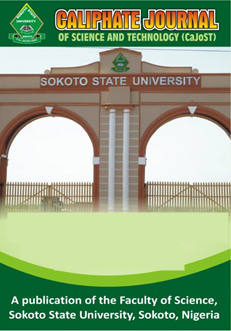Cracking of Used Engine Oil to Gasoline-Like Fuel Using Iron Oxide Nanoparticles Supported on HZSM-5
DOI:
https://doi.org/10.4314/08rnd868Abstract
Every day, large amount of used engine oil (UEO) is produced, which has major environmental issues due to its hazardous contaminants. UEO contains high percentage of higher molecular weight hydrocarbons that can be turned into valuable fuel products. Catalytic cracking of UEO oil into gasoline-like fuel using iron oxide nanoparticles over HZSM-5 support was investigated. The Fe3O4 nanoparticles was synthesised via the one-spot method using iron (III) chloride hexahydrate (FeCl3.6H2O) and iron (II) chloride tetrahydrate (FeCl2.4H2O) as precursors, while the HZSM-5 was synthesized using Al2(SO4)3.18H2O and Na2SiO3 as sources of alumina and silica, respectively. The catalysts properties were investigated by XRD, FTIR, EDXRF, and TGA methods. The XRD pattern of the HZSM-5 showed intense peaks at 7–9° and 22–25°, which are typical of highly crystalline HZSM-5 structure. The XRD pattern of the Fe3O4 showed the presence of intense peaks at the 2θ⁰ values of 25.14⁰, 28.47⁰, 31.93⁰ and 44.66⁰, which correspond to the crystallographic pattern of the Fe3O4 magnetic nanoparticles, and the mean size of the particles was found to be 16.05 nm. Results of EDXRF confirmed the doping of the HZSM-5 with different percentage of Fe3O4 nanoparticles. The UEO was cracked in a fixed stainless-steel batch reactor at 400 °C for 1h with and without the catalyst. ASTM standard procedures, gas chromatography coupled with mass spectrometry (GC-MS), and Fourier transformed infrared spectroscopy (FTIR) were used to examine the fuel properties, molecular profile, and functional groups respectively, of the UEO and liquid products. The results of GC-MS showed that the 10 wt.% Fe3O4/HZSM-5 catalyst is 86.04% selective towards C5 – C10 hydrocarbons, 63.16% selective towards olefins, and 18.42% selective towards aromatics. The high selectivity of the catalyst towards lighter hydrocarbons could be attributed to the pore size distribution of HZSM-5, which offers active sites for catalytic cracking. The fuel properties of the liquid products obtained using catalyst were found to be very similar to that of standard gasoline. Based on the results of the molecular profile and fuel properties, it was concluded that Fe3O4/HZSM-5 is a promising catalyst for cracking UEO, and the fuel obtained could be used directly or as a blend in spark-ignition engines without any negative impact on engine performance.

